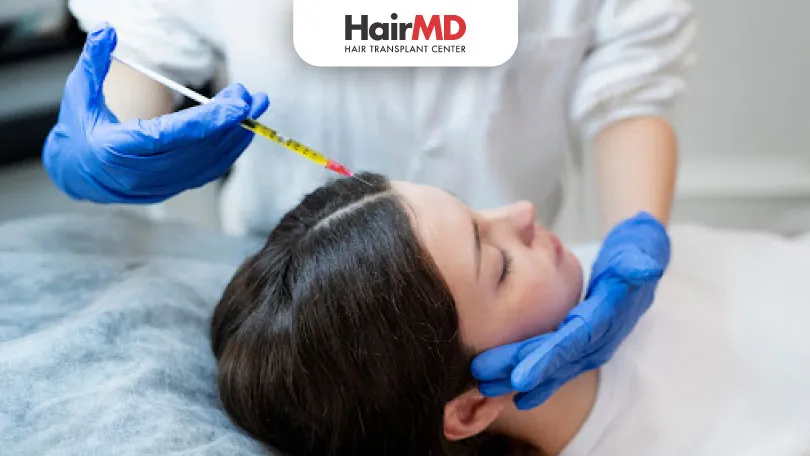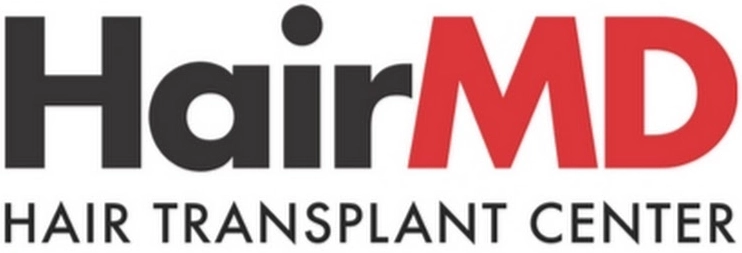14th March, 2022

Explore the latest clinical treatments for hair loss, including medications, PRP therapy, and hair transplants. Discover effective solutions tailored to your hair restoration needs.
Hair fall is part of a normal cycle of hair growth and replacement. Hair follicles generally go through the growth and resting cycle in a non-synchronized way. Heredity is often cited as one of the most common causes of hair loss among both men and women. genetics plays a major role in causation of baldness, along with other various factors like diet, stress, illness, medications, nutritional deficiency and more.
Various treatments for hair loss–including stem cell therapy and hair transplant, are now available to treat permanent hair loss. Here we discuss them briefly.
What’s covered in the article?
- Understanding the Causes of Hair Loss
- Best Treatments for Hair Loss
- Choosing the Right Treatment for You
- Conclusion
Understanding the Causes of Hair Loss
- In order to treat hair loss effectively we need to understand the cause first which could be any one or multiple of the following – recent Illness, including thyroid disease, other hormonal imbalances, severe infection, surgeries and blood loss.
- Nutritional deficiencies caused due to crash dieting, improper food habits and chronic illness.
- Certain medications are used to treat high blood pressure, heart problems, psychological disorders; chemotherapy or radiation treatment for cancer patients; and in some cases, unusually high levels of vitamin A or low levels of iron or protein.
- For women, birth control pills can also cause hair loss.
- Scalp disorders, including psoriasis, seborrheic dermatitis, or folliculitis.
- Trauma, including traction alopecia resulting from tight hairstyles that cause trauma to the hair follicles or repetitive pulling and breaking of one’s own hair.
Best Treatments for Hair Loss
Now that we’ve explored the potential causes, let’s dive into the best treatments available for hair loss:
1. Minoxidil
Minoxidil is an FDA-approved topical treatment that promotes hair growth. It’s available in both foam and liquid forms and can be applied directly to the scalp. Minoxidil promotes blood flow to the hair follicles, thereby stimulating hair regrowth.
Many people have reported significant results over time. Your doctor can diagnose the exact cause of hair loss and determine whether a 2% or 5% concentration of minoxidil is right for you.
2. Finasteride
Finasteride is a prescription medication for hair loss in men. It works by inhibiting the hormone responsible for hair loss. Women should avoid using it, especially if pregnant. Finasteride slows the rate of hair loss and stimulates new hair growth by inhibiting the action of the DHT hormones.
Your dermatologist can decide whether to prescribe you finasteride or not depending on the severity of hair loss, health condition and other parameters . . Hair loss may recur if the medication is stopped or discontinued.
3. PRP Treatment
Platelet Rich Plasma therapy it is an in-clinic procedure done under the guidance of a qualified and trained dermatologist. It involves drawing a small amount of your blood, processing it to concentrate platelets, and injecting the PRP into your scalp. This stimulates hair follicles and promotes hair growth. PRP (Platelet Rich Plasma) therapy is an advanced, non-surgical, therapeutic treatment for hair loss conditions which provide growth factors to stimulate hair regrowth. Platelets are cells which are normally responsible for cellular recovery after an injury, they are full of growth factors like vascular growth factors, platelet derived growth factors etc which can be used to stimulate damaged and dormant hair follicles to promote more hair growth.
PRP therapy for hair growth is highly used in hair restoration to produce natural-looking results. Using a thin needle, your own PRP is injected into the scalp. Over the course of time, these factors get absorbed into the follicular hair bed and, in turn, nourishes the hair follicles, giving rise to healthy, natural hair. In turn, it also activates the hair roots, which have been in dormant stage and induce hair growth within months. PRP also increases the blood vessels surrounding the follicular hair bed and, in turn, improves the blood supply to the hair follicles so that they are supplied with the essential nutrients.
4. Stem Cell Therapy
Hair loss can also be treated by stem cell therapy. Human hair grows out of tiny follicles present on the scalp. Damaged follicles have dormant or dead cells with less stem cell population which prevents new hair from growing. Stem cells help to stimulate these dead cells, promoting hair regrowth. These stem cells taken are from the patient’s own body fat and blood, processed and then injected back into the scalp.
Adding to the stem cells are also growth factors called SVF (stromal vascular fraction) present which when injected into the scalp nourish the stem cells and follicles. It helps promote hair growth and take care of baldness.
With ageing, the follicles tend to shrink and stop responding to the chemical signals given to it, thus hindering the process of hair regrowth. The follicle stem cell sends off chemical signals to the shrunken follicles. This, in turn, helps in regenerating and growing healthy hair.
A revolutionary treatment for hair loss for hair regrowth, stem cell therapy encourages new hair growth within 3 to 4 months of therapy. it is an absolutely safe and effective procedure for both men and women.
Stem Cell therapy for hair regrowth is an advanced, minor-surgical procedure to regrow hair follicles that results in healthy hair growth. These stem cells are capable of renewing themselves through cell division, sometimes after long periods of inactivity – thus helping in the stimulation of long-dead hair follicles in areas of baldness.
5. Low-Level laser therapy (LLLT)
Low-Level laser therapy (LLLT) is another highly effective non-surgical, non-pharmaceutical treatment for hair loss that can stimulate hair follicles and hair growth. This potent treatment for thinning hair and hair loss problems has been shown to deliver results when combined with other modalities of hairloss treatments.
LLLT is a modern non-surgical hair loss treatment that makes use of low level laser light to stimulate hair cell growth and improves the tiny hair follicles. It helps to combat hair loss and enhance the hair volume and its appearance. The therapy is painless and has no known side effects. Low-Level laser therapy for hair has been approved by the FDA as a potential hair loss treatment for both men and women, and is mainly used to treat androgenetic alopecia, commonly called male or female pattern-baldness.
6. Hair Transplant
Hair loss problems can be caused due to several reasons. While the process is reversible in most cases, there are instances when hair regrowth becomes difficult due to permanent damage to follicles and the scalp. These are the instances when Hair Transplant comes to the rescue.
Hair transplant treatment for hair loss can bring back the youthful and attractive appearance of a fuller head of hair. It is a surgical procedure in which hair follicles from a donor site (back and sides of head, beard) are taken and transplanted in the bald area. In most cases, the back of the head is often resorted to as the donor site because follicles in this region are genetically resistant to balding. Transplanted hair grows like normal hair and can be combed, styled, trimmed, and shampooed. The greatest benefit of this cosmetic surgery is that it provides permanent solutions, uniform distribution and low maintenance and natural look.
Choosing the Right Treatment for You
The best treatment for hair loss varies from person to person. It’s essential to consult with a dermatologist to determine the most suitable option based on your specific condition and needs. Remember that consistency is key, and results may take several months to become noticeable.
Hair loss can be a challenging issue, but there are effective treatments available to help you regain your confidence and a full head of hair. By understanding the causes and exploring various treatment options, you can embark on a journey to healthier and more beautiful locks
At HairMD, our experts facilitate a customised treatment for hair loss for patients to resolve their hair loss problems in the longer run.
Do You Know?
Nearly 250 Patients Visit HairMD
Everyday For Various Hair Concerns?
(You are one click away from flawless skin)
Meet Our Dermatologists
Conclusion
Clinical treatments for hair loss offer a range of solutions, from non-invasive therapies to surgical options. Consulting with a hair specialist can help you choose the most suitable approach based on your specific condition, paving the way to effective and lasting hair restoration.
Further Reading
Shedding Phase After Hair Transplant
Discover essential medications post-hair transplant like finasteride and minoxidil. Learn tips for care and recovery from HairMD Pune experts.
What medications should be taken after a hair transplant?
Discover essential medications post-hair transplant like finasteride and minoxidil. Learn tips for care and recovery from HairMD Pune experts.
Side Effects of Hair Transplant: Insights from Dermatologist
Discover the side effects of hair transplant surgery, preparation tips, and long-term benefits with insights from Dr. Sachin Pawar at HairMD Pune.
How to Stop Hair Shedding After an Accident?
Learn about causes of hair shedding after an accident, including hormonal imbalance and stress. Discover effective treatments and tips for healthy regrowth.
Have thoughts? Please let us know
We are committed not only to treating you, but also educating you.











